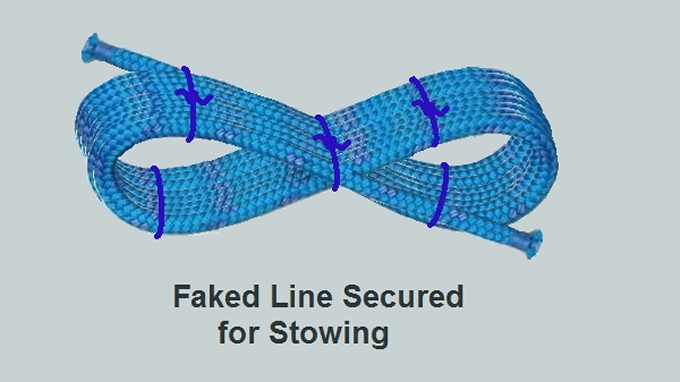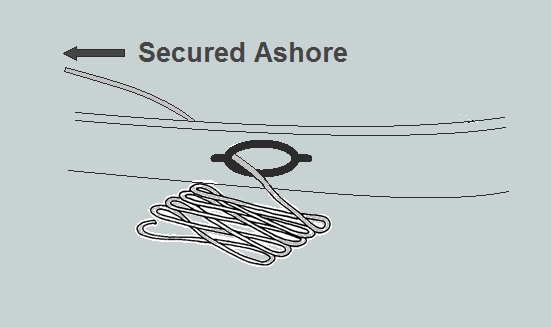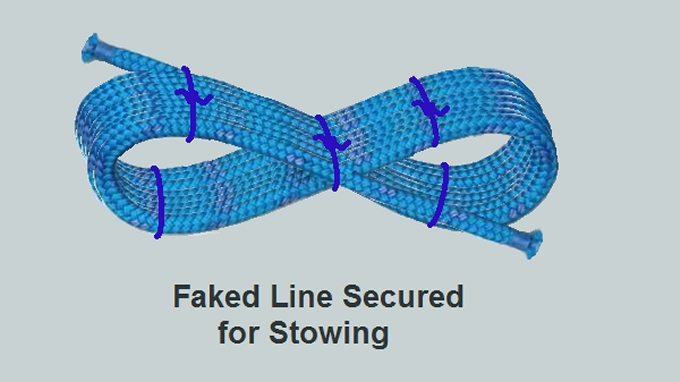The Blue View - Stern Anchoring
/I've talked about different anchoring techniques at length (or is it ad nauseum? ) in my past blog posts. I've pontificated about a single bow anchor, bow anchors in series, double bow anchors, and running lines ashore. One of my blog posts was devoted to anchor snubbers and another to floating an anchor chain. Thankfully, I've almost run out of thoughts on the subject of anchoring techniques, but if you will bear with me, I have one more method to discuss - deploying a stern anchor.
We have deployed a stern anchor on many occasions and for several different reasons. Sometimes, because of the depth of the anchorage or the particular geography, we have found it necessary to anchor close to shore in the lee of an island. Despite what weather is forecast or what the prevailing winds usually do, there is always the possibility of a wind shift, which could quite likely cause us to swing around and go aground. A stern anchor will keep the vessel from harm, and using one has saved our bacon more than once. One time we were anchored in the San Blas Islands off Panama when the forecast called for the usual fresh winds from the east. Just after midnight, however, a storm passed through, causing the wind to back to the west. It was a tight anchorage with several reefs around, and attempting to navigate our way out in the dark would have been extremely risky. It lasted about six hours, and the only thing that kept us off the rocks was our stern anchor. I think it is very likely that we would have lost Nine of Cups had we not had it deployed. The next day, we discovered the winds were so strong that several huts in the nearby village were damaged, and one was completely destroyed by what the locals called a hurricane.
Another reason for using a stern anchor is to limit the amount of swinging Cups can do while at anchor. Sometimes we find a small, well protected cove to anchor in, but with limited swinging room. Instead of running lines ashore, we will often deploy the stern anchor to keep our tail where we want it. We have also explored a number of rivers, and because of the depth of the river, the strength of the current, or the amount of debris floating down the river, it was often not a good idea to try to anchor in the middle. By dropping the stern anchor, we could anchor quite close to the riverbank and out of the current without the risk of swinging into the shallows or getting fouled on a tree limb.
A third reason is to keep the boat pointed in a particular direction. We have been in many anchorages where the wind would blow from one direction while the ocean swell came from another. The boat would lie facing the wind and would roll gunnel to gunnel from the swell on the beam, making for a very unpleasant evening. By deploying a stern anchor, it was possible to point Cups into the swell. We might not be totally comfortable, but at least we weren't getting tossed out of our bunk.
We use a 35 lb (16kg) Danforth anchor as our stern anchor. The Danforth has tremendous holding power for its weight and sets in most bottoms. Its biggest drawback is that it doesn't always reset well if the boat swings around and breaks it free, but this isn't a problem when we are using it as a stern anchor. In most cases, we use 15 feet (4.5m) of chain shackled to the anchor and 200 feet (60m) of line attached to the chain. If we are anchoring in coral, we sometimes increase the chain to 50 feet (15m). The combination of the anchor and chain gets heavy, however, and since the anchor will probably be hauled up by hand, we don't often use the extra chain.
To deploy the anchor, we first set the bow anchor, and then use one of three methods to set the stern anchor. If the purpose of the anchor is to keep us off the rocks if the wind changes, we let out another 30-40 feet (9m-12m) of anchor rode and back away from the bow anchor. When the bow rode is taut, we toss the Danforth anchor over the stern and let out only enough rode to allow the anchor to reach the bottom. Then we motor forward while letting out more stern rode until the desired scope is reached. The stern rode is tied off, we set the Danforth and retrieve the excess bow rode. If there is any chance of tangling or chafing the stern anchor rode on rocks or coral, after Cups settles back downwind, we fake any slack in the stern rode on deck, leaving it free to deploy if the wind shifts.
If the purpose of the stern anchor was to prevent Nine of Cups from swinging too much, the method of deploying the anchor is different. We figure out how much scope we need on the stern anchor, add 30-40 feet to this and if possible, back Cups up this distance while letting out additional rode on the bow anchor. If we can get Cups in the right position, we drop the Danforth, motor forward to set it, then take in the bow anchor rode until both anchors are almost taut. Often, because the bow anchor rode is not long enough, because of an adverse wind or current or because the place we want to drop the stern anchor is too shallow or too close to hazards, it isn't possible to back Cups up into the right position. In this case, we use the dinghy to position and drop the anchor. The anchor will usually drag several feet before setting, which is why we start with an extra 30-40 feet of rode.
If the objective was to point Cups into the swell, the process is the same except we place the anchor well off to the side of the vessel so that the angle of the boat on the wind can be adjusted. Pointing into the swell may put Cups broadside to the wind, putting extra strain on the ground tackle. If the wind picks up, we keep an anchor watch and slack off on the stern anchor if necessary.
To retrieve the stern anchor, we try to position the boat over the anchor if possible. If the rode is vertical, the Danforth usually breaks free and can be hauled in by hand. On occasion, it has been stuck so well that we needed the windlass to break it free, in which case we routed the stern anchor rode to the bow.
If we can't get Cups positioned over the anchor, we have to resort to using the dinghy. We position the dinghy over the anchor and take in all the slack in the rode. If we can't break the Danforth free by hand, the rode is secured to the dinghy and we motor around in circles until it works its way free.
When not in use, the anchor is lashed in its place. We keep our Danforth lashed to the mast pulpit. Then the rode is faked in a figure-eight pattern, secured with small line, and stowed.










